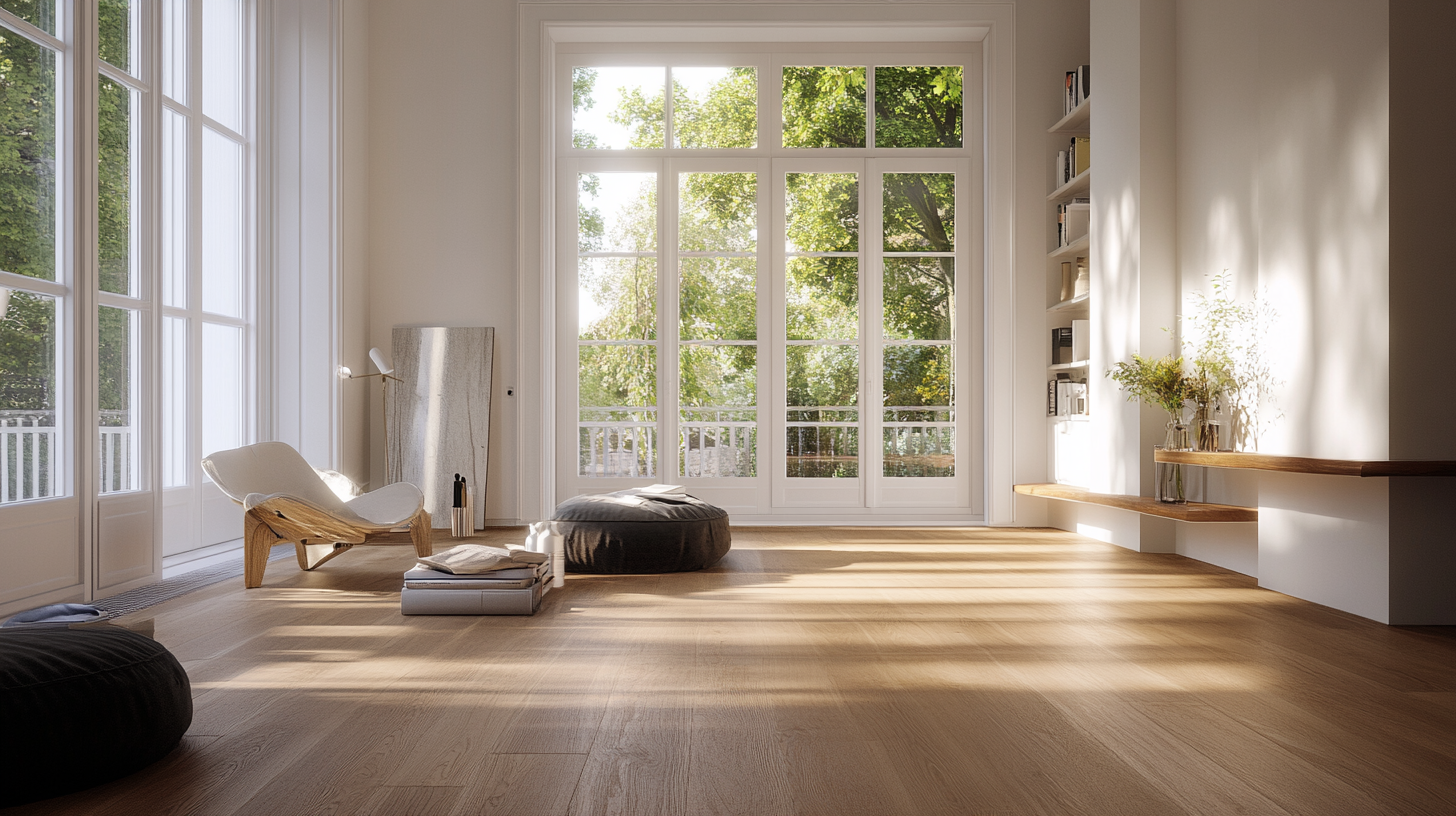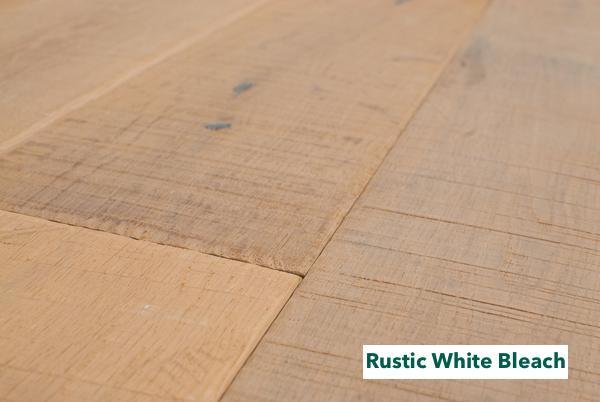That junction where wood meets tile is more than just a seam; it’s a secret design weapon. A thoughtful wood to tile transition defines zones, smooths out height changes, and creates visual harmony across spaces.
Instead of seeing it as a fix, think of it as a chance to elevate your space: use eye-catching patterned tiles, sleek metal strips, or contrasting wood tones to define areas and guide the eye. A smart transition does more than bridge a height difference—it injects polish, purpose, and visual interest into your kitchen, dining room, or entryway.
✔️ It defines zones (like from kitchen to dining area)
✔️ It smooths out height and texture changes
✔️ It protects edges and maintains a clean, cohesive flow
Imagine stepping from a cozy wood floor onto beautifully patterned tile, guided by a handcrafted transition strip that ties both surfaces together beautifully. No tripping hazards, no jarring changes—just seamless elegance that feels intentional.
Interested in testing a look before committing? Try one of our complimentary sample transition strips—perfect for seeing how it works in your own home, no guesswork.
Ready to give your floors the upgrade they deserve? Claim your free sample now ⬇️
Designing a Smooth Wood-to-Tile Transition That Feels Seamless
A great floor transition does more than fill a gap—it creates a cohesive layout.
The simplest approach? Transition strips. Available in wood, metal, or tile, they’re easy to match to your flooring and especially helpful when you’re working with uneven floor heights—like solid hardwood meeting ceramic tile. Clean, practical, and easy to install.
But you can take it a step further. Want something more custom? Try a curved transition to soften the transition between rooms, or use diagonal lines to create movement and structure without the need for walls. These creative cuts aren’t just decorative—they help guide the eye and give your space a more architectural feel.
As always, colour and tone matter. Contrast can be striking—light wood against dark tile makes a bold statement. Prefer a softer look? Stick with similar tones to blend the transition more naturally. The 60-30-10 design rule is a great place to start if you’re unsure: 60% main colour, 30% secondary, and 10% accent.

And don’t forget about height. Wood and tile rarely sit at the same level. To keep things smooth (and safe), adjust the subfloor during installation or choose transition moulding that compensates for the difference. This is especially important in high-traffic zones like doorways and stairways.
Still deciding on your flooring? Easiklip solid hardwood is a floating floor system that installs without nails or glue—ideal for DIYers who want real wood without the hassle. It’s designed to work over most subfloors, including concrete, and pairs beautifully with tile. Fast to install. Easy to maintain. Built to last.
Now, let’s dive into 10 transition ideas that go beyond the basics—and help you create a space that looks intentional, cohesive, and professionally finished.
10 Stylish Wood-to-Tile Transition Ideas You’ll Actually Love
Hardwood and tile might be worlds apart in texture and appearance—but that contrast is exactly what makes their meeting point so powerful. When done right, a transition between the two doesn’t just fill a gap—it becomes a feature.
Designers and DIYers alike are getting creative with wood-to-tile transitions, finding new ways to blend style with practicality in their floor design. Whether it’s a sleek strip, a bold inlay, or a patterned edge, the goal is always the same: to make the shift between materials feel smooth, intentional, and part of the bigger design picture. Creating a distinct separation can enhance the overall design while still allowing for a seamless flow between the areas.
Here are 10 great floor transition ideas that go beyond the standard T-moulding—and turn your flooring into something worth showing off.
1. Metal Transition Strips
An excellent choice for clean, simple transitions. Metal strips—available in aluminum, stainless steel, or brass finishes—are great for adding a modern touch while keeping things low-profile. You’ll find them in shiny, satin, or matte options to match your space. These strips are easy to install and especially helpful in narrow spots like doorways or hallways.

2. Tile Inlays for Busy Areas
Think of this like a built-in rug—except it’s tile. A tile inlay adds a decorative break in a hardwood floor while offering protection in high-traffic areas like kitchens and entryways. It can also be used to define zones within open layouts, such as transitioning from a kitchen to a dining area. It gives visual contrast, keeps things clean, and helps define zones within open layouts. Bonus: it’s easier to clean than a real rug.

3. Geometric Flow Transitions
Hexagons. Diamonds. Zigzags. If you want something bold, intricate patterns are your move. Let your tile flow into your hardwood using a staggered geometric pattern. Lay the tile first, cut the hardwood to match, and take your time—this one’s all about the details. It’s more work, but the finished look is designer-level.

4. Matching Width Planks
If your tile is plank-style, match it to the width of your hardwood boards. It’s a subtle move, but it makes the transition look effortless. Great for bathrooms, laundry rooms, or anywhere water resistance matters. You get the look of continuity with the function of tile, ensuring a smooth transition between different flooring types.

5. Hardwood End Cap
Have an uneven transition to deal with? Use a hardwood plank as an end cap. It doubles as a threshold while visually blending both floors. If your wood is higher than the tile, taper the plank for a safe, smooth edge. It’s an elegant solution that keeps things looking finished without calling too much attention to the transition itself.

6. Doorway Transitions
Doorways are classic transition points—and they don’t have to be boring. When transitioning from one room to another, consider creating a seamless flow by using appropriate materials and design elements. Use a wood strip, metal edge, or even custom-milled moulding. Want it to disappear? Use the same wood species and stain as your floor for a seamless look. The right doorway transition helps rooms feel connected without losing their character.

7. Tile or Stone Threshold
Instead of wood, try a tile or stone insert in the gap between floors. It’s a great way to create a striking focal point by adding a pop of colour or texture—especially in neutral spaces. Choose something that ties into both floors, and make sure your grout complements the palette. It’s a small detail that makes a big impact.


8. T-Moulding for Equal Heights
When both your tile and wood floors are the same height, T-moulding is your friend. Most wood flooring brands offer matching versions. It snaps into a metal track and floats slightly above the joint, allowing for natural movement. Simple, clean, and ideal for first-time DIYers looking to achieve smooth transitions.

9. Blended Sawtooth Edges
Here’s one that really stands out. Instead of a straight cut, blend the tile and hardwood with a sawtooth pattern where tiles meet. It’s especially striking with square or herringbone tile. The shapes create a sense of movement while still maintaining structure. Cut tiles to 90°, and angle the wood at 45° to match.

10. Glass Mosaic Accent Strips
Want a little drama? Add a strip of glass mosaic tile between your wood and tile for the perfect combination of design aesthetics and functionality. It acts like a high-end accent border and can be customized to match your space. Glass tile brings light, colour, and texture—and looks especially sharp in kitchens, bathrooms, or anywhere you want a designer touch.

Transition Ideas for Specific Rooms
Different rooms in a home require unique transition ideas to create a functional and aesthetically pleasing space.
For instance, a kitchen floor transition may involve a tile to wood floor transition, while a bathroom may require a more waterproof solution, such as a tile transition with a curved edge. In a living area, a seamless transition between hardwood floors and tile can be achieved using a straight line transition or a gradual transition.
The choice of transition idea depends on the specific needs and design of the room. For example, a bold design statement can be made in a kitchen using a herringbone pattern or contrasting colors, while a more subtle approach may be suitable for a bedroom.
The use of ceramic tiles, marble tiles, or other flooring materials can also add depth and texture to a space.
Materials and Techniques
Various materials and techniques can be used to create a visually appealing transition between two different flooring materials. For example, wood transition strips can be used to create a seamless transition between hardwood floors and tile, while metal transition strips can add a modern touch to a space. The use of patterned tiles, such as a herringbone pattern, can also create a unique and eye-catching design.
Additionally, the use of similar tones and textures can help to create a harmonious transition between two different flooring materials.
The choice of material and technique depends on the specific design and functionality of the space. For instance, a big difference can be made in a room by using a bold and contrasting material, such as a dark tile with a light wood floor.
DIY Wood-to-Tile Transitions: Make It Your Own
A floor transition might seem like a small detail—but when done right, it makes a big impact.
Whether you’re connecting tile to hardwood, stone to wood, or even two types of wood flooring, a well-planned flooring transition adds polish, structure, and flow to your space. And with the right approach, you can do it yourself—no special tools, no complicated steps.
Easiklip solid hardwood flooring makes this kind of project simple. Our clip-together system installs without nails or glue, which means you can easily pair it with tile, natural stone, or even decorative inlays. It’s fast, clean, and beginner-friendly—perfect for homeowners who want a high-end look without hiring a contractor.

Many of the transition ideas in this guide also work for breaking up open floor plans, adding visual interest, or solving height differences between rooms. If you’re looking for wood floor transition ideas, explore creative and aesthetically pleasing ways to connect kitchen tile with wood flooring. If you’re looking for a clean finish, we offer solid white oak T-moldings and reducer strips that can be stained to match any colour or flooring style—giving your transition a seamless, custom look.
Conclusion: Finish Strong, Floor Smarter
Transitions aren’t just practical—they’re an essential part of the design. The right one smooths out height changes, protects your flooring edges, and adds that final, professional touch that makes a room feel truly finished.
Whether you choose a bold tile inlay or a subtle moulding strip, what matters is that the transition fits your space—and your style, making it an ideal choice for a bold and visually stimulating design. For those who prefer a minimalist approach, using straight line transitions between different flooring types ensures a clean and cohesive look.
And with Easiklip, you don’t need to compromise. You can install solid hardwood floors and create flawless transitions, all on your own timeline and budget.
🔨 Explore our Easiklip flooring collections and finishing accessories to get everything you need to bring your project together—from start to seamless finish.




































